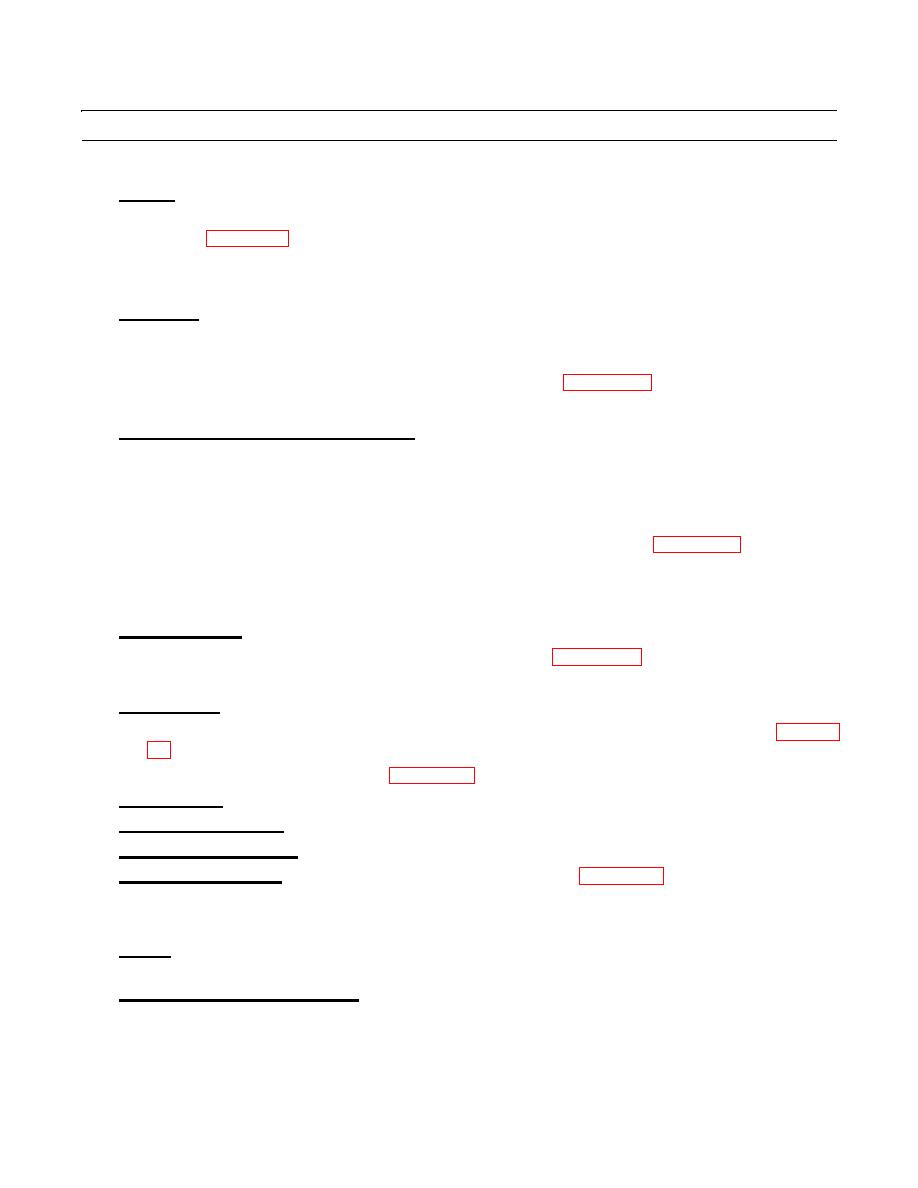 |
|||
|
|
|||
|
|
|||
| ||||||||||
|
|
 TM 10-3930-660-24-2
GENERAL MAINTENANCE INSTRUCTIONS - CONTINUED
0312 00
CLEANING INSTRUCTIONS - CONTINUED
4.
Castings.
a.
Clean inner and outer surfaces of castings and all areas subject to grease and oil with solvent cleaning compound
(Item 10, WP 0323 00).
b.
Use a stiff brush to remove sludge and gum deposits.
c.
Clear out all tapped (threaded) holes with compressed air to remove dirt and cleaning solvent.
Oil Passages. Particular attention must be given to all oil passages in castings and machined parts. Oil passages must be
5.
clean and free of any obstructions.
a.
Clean passages with wire probes to break up any sludge or gum deposits.
b.
Wash passages by flushing with solvent cleaning compound (Item 10, WP 0323 00).
c.
Dry passages with compressed air.
6.
Oil Seals, Electrical Cables and Flexible Hoses.
CAUTION
Washing oil seals, electrical cables and flexible hoses with dry cleaning solvents or mineral spirits will cause
damage or destroy the material.
a.
Wash electrical cables and flexible hoses with a mild solution of detergent (Item 17, WP 0323 00) and water and
wipe dry.
b.
Oil seals are generally damaged during removal; cleaning will not be necessary since new seals will be used in
assembly.
7.
Machined Surfaces.
a.
Clean machined surfaces with solvent cleaning compound (Item 10, WP 0323 00).
b.
Dry surfaces with compressed air.
8.
Mated Surfaces.
a.
Remove old gasket and/or sealing compound using a wire brush and solvent cleaning compound (Item 9, WP 0321
b.
Lightly coat with lubricating oil (Item 30, WP 0323 00) and wrap all parts subject to rust before storing.
Rusted Surfaces. Clean all rusted surfaces using wire brush and crocus cloth.
9.
Oil-Bathed Internal Parts. Wipe oil-bathed internal parts clean with a lint-free cloth.
10.
Air-Actuated Internal Parts. Wash air-actuated internal parts clean with a lint-free cloth.
11.
Externally Exposed Parts. Wash externally exposed parts with detergent (Item 17, WP 0323 00) and water. Rinse thor-
12.
oughly and air dry.
INSPECTION INSTRUCTIONS
General. All components and parts must be carefully checked to determine if they are serviceable for reuse, if they can
1.
be repaired or if they must be scrapped.
2.
Drilled and Tapped (Threaded) Holes.
a.
Inspect for wear, distortion (stretching), cracks or any other damage in or around holes.
b.
Inspect threaded areas for wear, distortion or evidence of cross-threading.
c.
Mark all damaged areas for repair or replacement.
0312 00-3
|
|
Privacy Statement - Press Release - Copyright Information. - Contact Us |